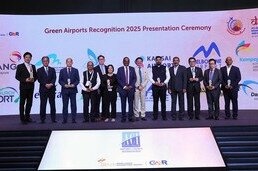
1H24 Results: International Travel Demand Sees Auckland Airport Deliver Improved Half-year Result as It Invests for the Future
- 2024-02-22
Auckland Airport today announced its financial results for the six months to 31 December 2023.
Auckland Airport Chair Patrick Strange said: “Global demand for travel saw Auckland Airport deliver a solid result in the first half of the 2024 financial year, with continued growth in our international network as airlines expanded capacity and new entrants joined the market. North America has been a particular highlight, where more people are now travelling to and from Auckland than ever before. While the outlook continues to remain positive, we may see the rate of growth slow over the second half of the financial year as the local aviation industry faces into economic headwinds.”
Key performance data for the six months to 31 December 2023:
- Total number of passengers 9.3 million
- Domestic passengers of 4.3 million, and international passengers (including transits) of 5.0 million
- Revenue of $440.5 million
- Operating EBITDAFI of $310.2 million
- Reported profit after tax of $118.7 million
- Earnings per share of 8.05 cents
- Net underlying profit after tax of $145.7 million[1]
- Net underlying profit per share of 9.89 cents
- An interim dividend of 6.75 cents per share will be paid
“The half-year has not been without its challenges, with some customers experiencing unacceptable delays in processing. I’m pleased about the way our team stepped up and led the collaboration with government agencies, airlines and airline ground handlers to drive improvements. This collective effort saw the system running more smoothly in time for the summer peak, delivering a much-improved experience for travellers,” Mr Strange said.
Chief Executive Carrie Hurihanganui said: “As New Zealand’s gateway, strong connectivity between Auckland Airport and the world is essential for our economy, so the successful growth in international routes has been extremely positive.
“During the half year we were thrilled to welcome new airlines and destinations, with 27 airlines flying to 42 international destinations to and from Auckland Airport – only two carriers and one destination short of pre-COVID numbers.
“Auckland is now the most connected city in Australasia to the North American market, with seven[2] airlines flying non-stop to eight destinations, including some of the world’s largest commercial centres. In terms of benefits to customers, the increase in connectivity means more airlines to choose from and downward pressure on airfares for this market.
In the six months to 31 December 2023, the total number of travellers increased by 22% to 9.3 million. Domestic traveller numbers were up 4% to 4.3 million, international travellers (excluding transit passengers) were up 44% to 4.6 million and the number of international transit travellers increased 33% to 0.4 million.
Other key markets have also shown considerable growth in capacity. There are now five airlines flying to and from six destinations in China, with leisure visitors accounting for over 60 per cent of all inbound travellers from China during the half year, overtaking those arriving to visit friends and relatives. India and Philippines markets have also shown strength, with demand for seats exceeding pre-pandemic levels during the period.
“As services have ramped up, driving improvements in the customer journey has been a clear focus for everyone in the airport eco-system, particularly in the international arrivals area. I’m delighted to say this resulted in more than a 20 per cent improvement[3] in processing times for customers coming through the international arrivals process across December and January, compared to the prior two months of October and November 2023.
“We are going to keep working at it to continue to improve the experience for travellers. It’s why the upgrade of Auckland Airport’s infrastructure is so important. We want a better experience for travellers across the system and that’s what our investment will deliver,” she said.
“Another key highlight over the half-year has been achieving Level 4 Airport Carbon Accreditation[4], putting Auckland Airport among Australasia’s seven leading airports in terms of sustainability. This recognises Auckland Airport’s commitment to carbon reduction and the work we are doing with our partners to reduce indirect emissions.
Ms Hurihanganui said Auckland Airport’s infrastructure development programme continued to make good progress, with major projects underway across transport, airfield and terminals to ensure the airport is resilient for the future. The first stage of the Transport Hub is nearing completion and is expected to open in April 2024, acting as a new entrance and departure point for the millions of travellers who visit Auckland Airport each year.
“We are focused on delivering new transport infrastructure that will make journeys to the airport much easier and more reliable for travellers. Our new Transport Hub, which will serve both international and domestic jet passengers once the new integrated terminal is built, will help travellers move between vehicles, public transport and the terminal quickly and easily. The pick-up and drop-off area is undercover and protected from the weather; roads have been configured to provide a seamless one-way system for transport, and a new landscaped pedestrian plaza will provide for a real uplift in the overall customer experience.
“Like many of our projects, we’re delivering the Transport Hub with sustainability at the forefront. A giant solar array will help to power the facility, and we’ve set aside a corridor of land right next to the Hub to allow for the development of future mass rapid transit.”
Elsewhere on the aviation precinct, aeronautical construction projects continue to advance as a priority as Auckland Airport works to build greater resilience into New Zealand’s busiest gateway and transform the customer experience.
“Critical enabling works to prepare for a new domestic terminal connected to the existing international terminal are well advanced. This includes construction of the new eastern bag hall with three baggage carousels providing not just a step change in technology and energy efficiency, but the first elements of the future baggage handling system.
“A major airfield expansion is also underway, delivering seven new remote stands for international aircraft and including construction of 3,500m of new stormwater pipes to increase the resiliency of the airport and protect it from extreme weather events. The project is on track for completion in late calendar year 2025.
“In terms of waste, we are having a meaningful impact on the environment with several initiatives underway. One of these is a successful trial to separate organic waste in the international and domestic terminal landside food courts. This is already saving eight tonnes of waste from the landfill each month and is being turned into valuable compost. Alongside this, the new $5 million transitional waste facility is improving the way waste from international flights, airline lounges, as well as all waste from the domestic terminal and airside waste from the international terminal is managed. This purpose-built facility sees the waste manually sorted to separate low-risk, clean recyclables and diverts them from biosecurity treatment and disposal in landfill.
“Travellers are also seeing the benefits of work to improve facilities at the domestic terminal, which is now almost 60 years old and reaching capacity. While we build our new domestic terminal, we want to make sure customers have an enjoyable and comfortable experience in the existing domestic terminal. So far, new women’s and men’s bathrooms have opened near regional arrivals and departures, and customers are loving the fresh, new facilities and extra space. We will soon begin working on the bathroom blocks near the Air New Zealand bag reclaim, with a new parent room, upgraded accessible toilet facilities, and gender-neutral toilets being delivered.”
Other improvements are underway across the aviation precinct, upgrading the experience for visitors and the 20,000-plus people that work at the airport and helping the airport reach its sustainability goals.
“Our new Park & Ride South facility, due to open before the end of the 2024 financial year, will create easier travel connections for anyone arriving from the south. With about 40 per cent of all precinct traffic arriving from the south, we recognise the importance of upgrading the southern access point to the airport. Our new parking facility will offer convenient parking options and easy connections to the terminals via a bus service that will transition from fossil-fuel to electric next summer.
“We saw Te Arikinui Pullman Auckland Airport Hotel, our joint venture with Tainui Group Holdings, open its doors for the first time in December, providing a 5-star accommodation experience to visitors on the doorstep of the international terminal.
“Mānawa Bay, which aims to be New Zealand’s first 5 Green Star premium outlet shopping destination, is on track to open in September 2024, and has experienced strong demand from tenants.”
In the terminals, Aelia Duty Free (owned by Lagardère Travel Retail SAS) has been operating as Auckland Airport's main duty-free operator, after winning a contract extension until mid-2025. It’s been a successful transition as part of Auckland Airport’s move to a single-operator duty free model.
“All of these developments, plus many more, will deliver the thriving aviation precinct that Kiwis are looking for,” she said.
On the regulatory front, Auckland Airport recently joined other regulated airports and the New Zealand Airports’ Association (which represents city and regional airports) in appealing to the High Court for a merits review following a decision by the Commerce Commission, which regulates the pricing of major airports.
The appeal relates to the Commission’s decision on 13 December following its review of input methodologies (IM) – the rules, requirements and processes that outline how the Commission regulates electricity line, gas pipeline and airport services under the Commerce Act (Part 4). This appeal process is included in the Act as the appropriate way for the Commission’s decisions to be reviewed.
Separate to this, the Commission is currently underway with its review of Auckland Airport’s Price Setting Event 4 (PSE4), with the draft outcome of the review expected in May.
As we look to the remainder of the 2024 financial year, we continue to see healthy airline capacity in the market, although headwinds such as the softening of the New Zealand economy may temper the rate of growth.
Reflecting this, Auckland Airport is reconfirming its guidance of underlying profit after tax (excluding any fair value changes and other one-off items) of between $260 million and $280 million. With the significant investment across the airport precinct continuing, Auckland Airport is lifting its guidance on capital expenditure to between $1.1 billion and $1.4 billion in the year (from between $1 billion and $1.4 billion). As always, this guidance is subject to any material adverse events, significant one-off expenses, deterioration as a result of global market conditions, or other unforeseeable circumstances.
- We recognise that EBITDAFI and underlying profit are non-GAAP measures. Please refer to the table at the end of the media release for the reconciliation of reported profit after tax to underlying profit after tax
- Air New Zealand, Air Canada, American Airlines, Delta Air Lines, Hawaiian Airlines, Qantas and United Airlines
- Processing time from entering customs to leaving aviation security
- Airports Council International







